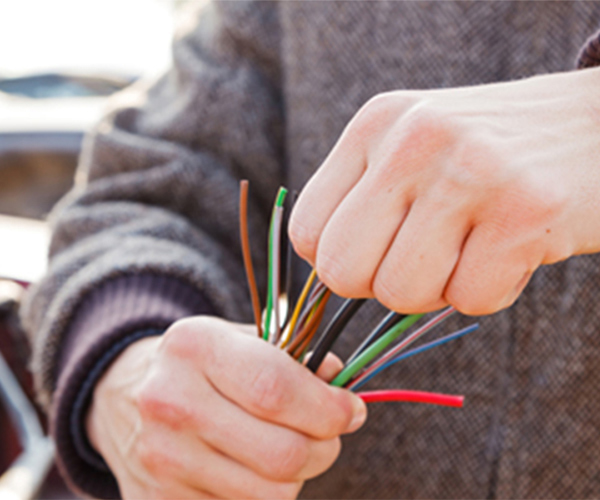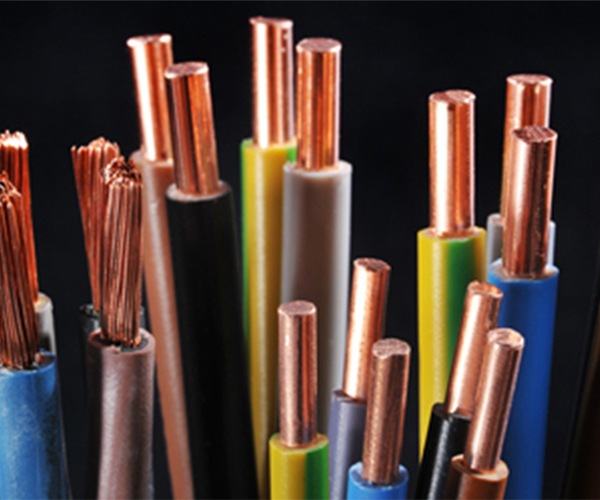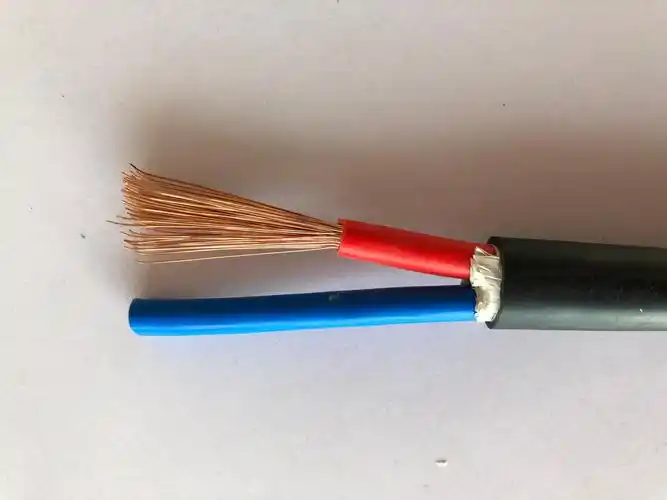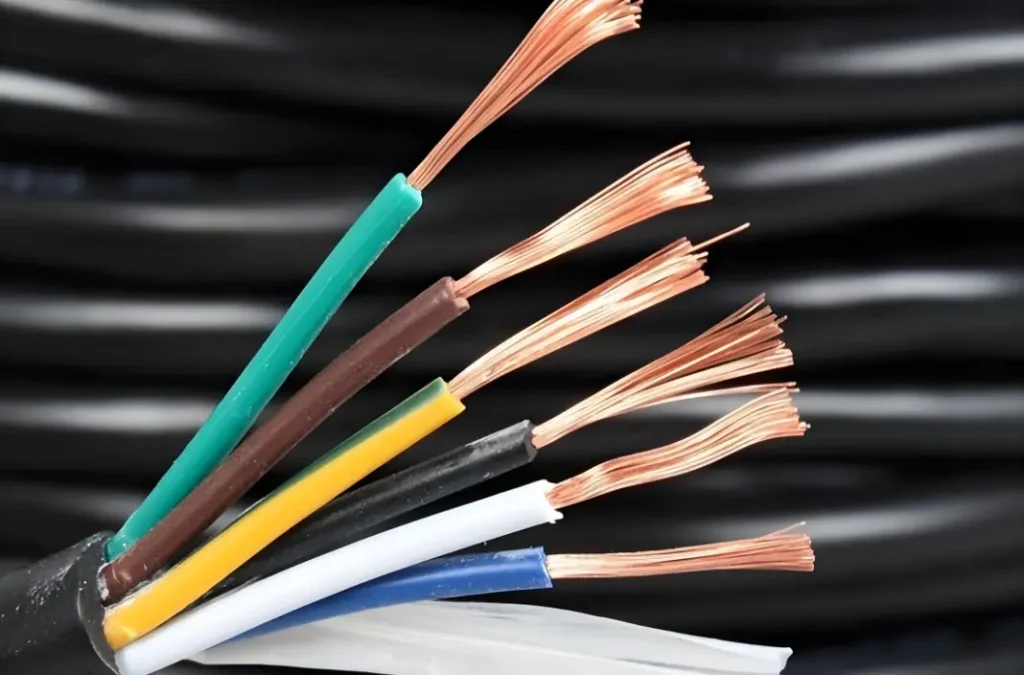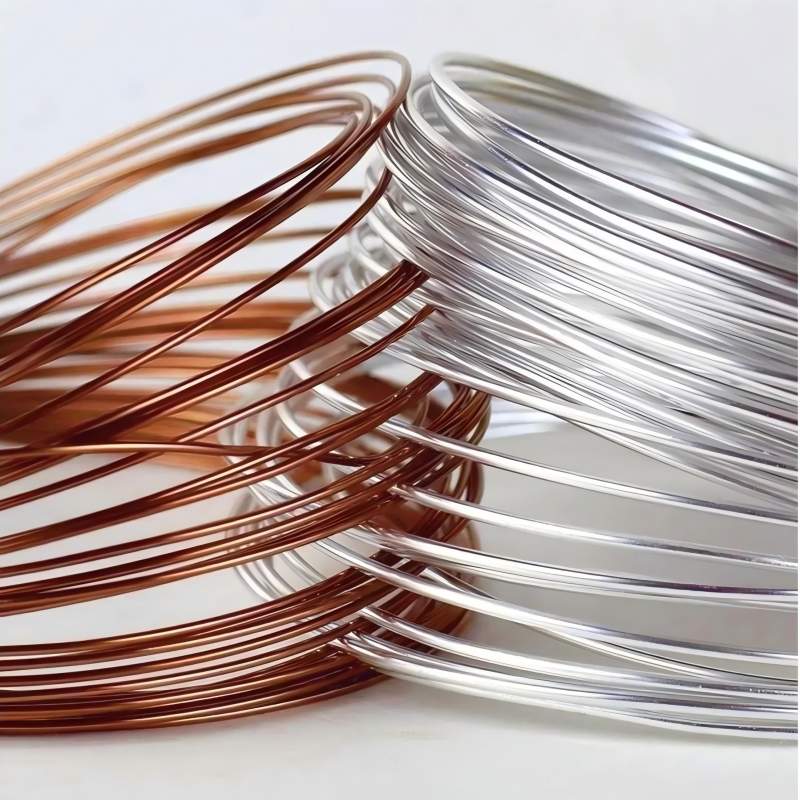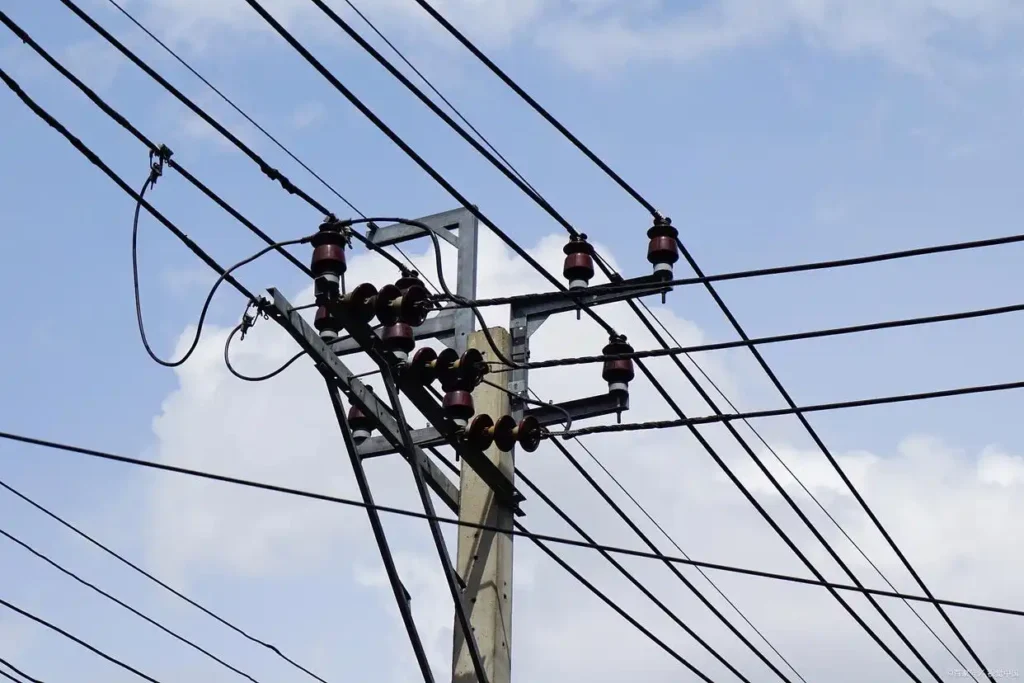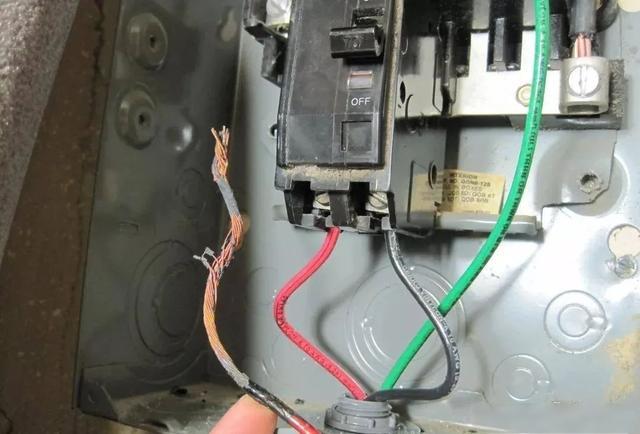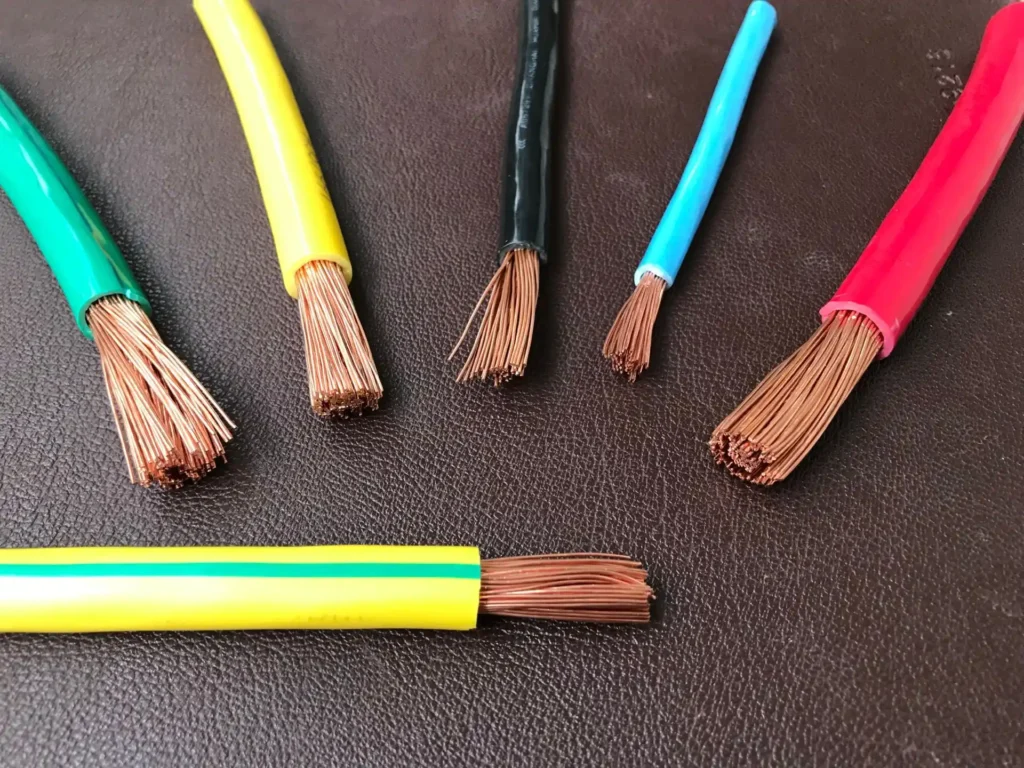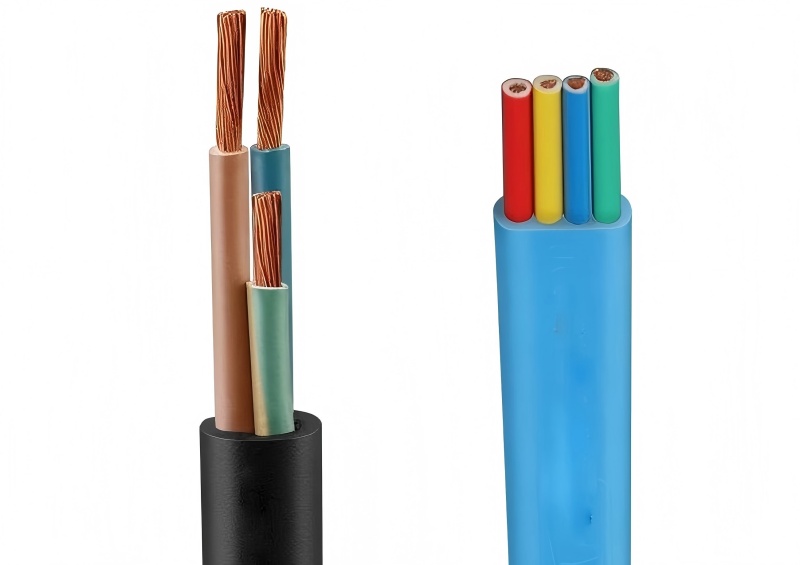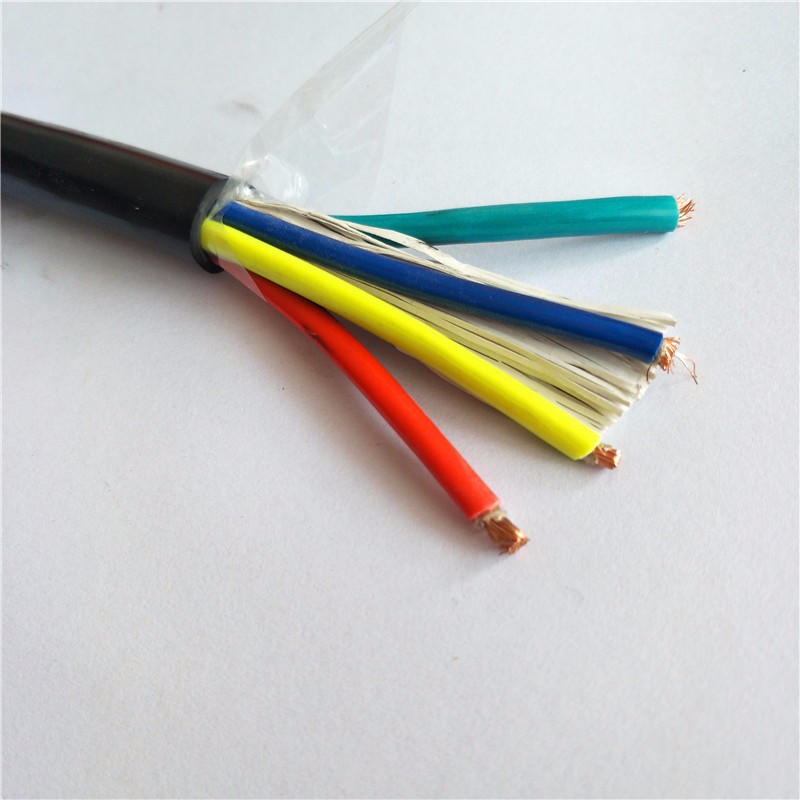1. The Invisible Killer: How UV Light Eats Away the Life of Rubber Ultraviolet rays in sunlight are an invisible killer for tires. When ultraviolet rays with a wavelength of 295-400nm strike rubber molecules, they sever the chemical bonds within the polymer chains. This causes the rubber to suffer from a triple damage: microcracks, hardening, and discoloration. Tires exposed to the sun experience a kind of “chronic asphyxiation,” as the anti-aging agents in the rubber evaporate faster under the catalytic effects of high temperatures. Patent CN108725162A states that for every 10°C increase in tire temperature, the oxidation reaction rate doubles, leading to the gradual development of a network of cracks […]
Electrical wires, the silent lifeblood of home safety, can often become “invisible killers” due to careless purchasing. Avoiding these pitfalls is the only way to protect your lifeline. Trap 1: Superstitious about Low Prices, Giving Safety a Backseat to Greed The “lowest price wins” mentality, like with electrical wires, is the beginning of danger. Low prices often harbor inferior raw materials and illegal production. A report from the General Administration of Quality Supervision, Inspection and Quarantine shows that approximately 15% of commercially available electrical wires have insufficient conductor cross-sectional area or inferior insulation materials. These “reduced-material” products have a dramatic increase in resistance, which can accelerate aging at best and even […]
ケーブルを耐火性コーティングで覆うことは、電気のこれらの「ライフライン」を1ミリメートル以下の保護装甲で覆うようなものです。この微細な防御線は2025年に技術的なアップグレードを受けました。新たに発表された国家必須規格GB 28374-2025「ケーブル用難燃性コーティング」が2026年6月に施行され、ケーブルの安全性に対するより強力な障壁を提供します。ケーブル火災の致命的な脅威 ケーブルの外層は通常、プラスチック(PVCやポリエチレンなど)でできています。火災が発生すると、これらの材料は燃料としてだけでなく、致命的なガス発生装置としても機能します。加熱されると分解し、塩化水素やダイオキシンなどの有毒ガスを放出します。70%以上が[...]
1. 選定前の準備:コアとなる要求パラメータを明確にする ケーブルを購入する際の最初のステップは、製品を見ることではなく、自分のニーズを整理することです。医者が処方箋を出す前に状態を診断する必要があるように、ケーブル選定の3つのコアパラメータを明確にする必要があります。電気パラメータは基礎の基礎です。機器に必要な定格電圧(450/750Vなど)、連続電流(30Aなど)、ピーク電流(モーター起動時の瞬間電流など)を記録します。これらのデータは、導体断面積の安全範囲を直接決定します。敷設環境は見落とされがちですが、非常に重要です。配線長(電圧降下計算に影響)を測定し、周囲温度(耐熱材料は[...]を確認します。
1 導電率と火災リスクの違い 電気火災の出発点は、目に見えない抵抗に隠されていることがよくあります。銅の抵抗率はわずか1.678μΩ・cmですが、アルミニウムの抵抗率は2.82μΩ・cmと高く、銅よりも約68%高くなっています。この物理的特性の違いが、通電時にワイヤが生成する熱を直接決定します。電流が導体を通過すると、ジュールの法則によれば、発生する熱は抵抗に比例します。これは、同じ負荷の下では、アルミニウム線は銅線よりも多くの熱を生成し、温度上昇がより顕著であることを意味します。Asian Cable Technologyの専門家は、「温度上昇は[...]と指摘しました。
1. 材料革命:絶縁層と導体の分子レベルでのブレークスルー 電線およびケーブルの伝送性能のコアボトルネックは、誘電損失と導体インピーダンスにあり、材料の革新が分子レベルでこの問題を解決しています。発泡絶縁技術は、レートを高めるための重要な経路となっています。長飛光ファイバーの特許は、発泡材料の配合を最適化することにより、絶縁層の発泡度が85%に達し、発泡セルの均一性が大幅に向上することを示しています。これにより、RF同軸ケーブルの減衰量が2700MHzの周波数で100メートルあたり6.3dBから5.64dBに減少し、減衰指数が[...]改善されます。
1. 「都市の火薬庫」:古い配線が火災の原因となる 電気火災の導火線は、建物の壁の奥深くに埋まっています。ワイヤの絶縁層が経年劣化して破損すると、金属導体が鋭利な刃のように露出します。データによると、短絡が電気火災の原因の73.7%を占め、過負荷と故障アークがそれぞれ9.8%と10.6%を占めています。2025年には、ボル市で発生した多くの住宅火災は、電気的故障や短絡が原因で、カーペットや段ボールなどの可燃物に引火したことが原因でした。一見するとわずかな4平方メートルの火災面積は、[...]の住民の生死を分ける脱出でした。
1. 血と涙の警告:非標準ケーブルは見えない火災爆弾 緊急管理省の統計によると、ケーブルの問題が火災の主な原因となっています。過去10年間で、国内でケーブルが原因で発生した重大な火災事故は、火災総数の50%以上を占めており、その中で非標準ケーブルが原因となっています。2020年、広西チワン族自治区南丹県の城関貿易市場で発生した火災では、消防士1人が死亡、6人が負傷しました。2013年、深セン市の栄健農業卸売市場で発生した火災では、16人が死亡し、1781万元の直接的な経済的損失が発生しました。どちらの事故の直接的な原因は[...]でした。
1. 製造プロセスの利点:製造効率の自然な選択 電線およびケーブルの製造は、高速かつ連続的な工業プロセスであり、丸い設計は比類のない製造上の利点を示しています。導体の伸線から多層絶縁押出まで、丸いダイスは技術的に最も実現しやすく、コストも最も低くなります。伸線プロセスでは、金属線は一連の徐々に縮小する丸いダイス(通常はダイヤモンドまたはカーバイド製)を通して引き伸ばされて薄くなり、このプロセスは自然に丸い断面を形成します。絶縁コーティング段階では、丸い断面により、押出機が導体を均等に包み込み、鋭い角での厚さの不均一を回避できます。青島のエンジニア[...]
1. 従来のケーブルの目に見えない脅威、燃焼の背後にある致命的なコスト 従来のケーブルの絶縁層は、主にポリ塩化ビニル(PVC)でできており、その難燃性はハロゲン添加剤に依存しています。火災が発生すると、これらのハロゲン含有材料は塩化水素やダイオキシンなどの有毒ガスを放出し、大量の黒煙を発生させます。濃い煙は30秒以内に視界を1メートル未満に低下させ、塩化水素は水と出会うと塩酸を形成し、消防設備や人間の呼吸器系をさらに腐食させます。さらに深刻なことに、このようなケーブルは、高層ビルや地下鉄などの閉鎖された空間で「煙突効果」を引き起こす可能性が非常に高くなっています[...]

